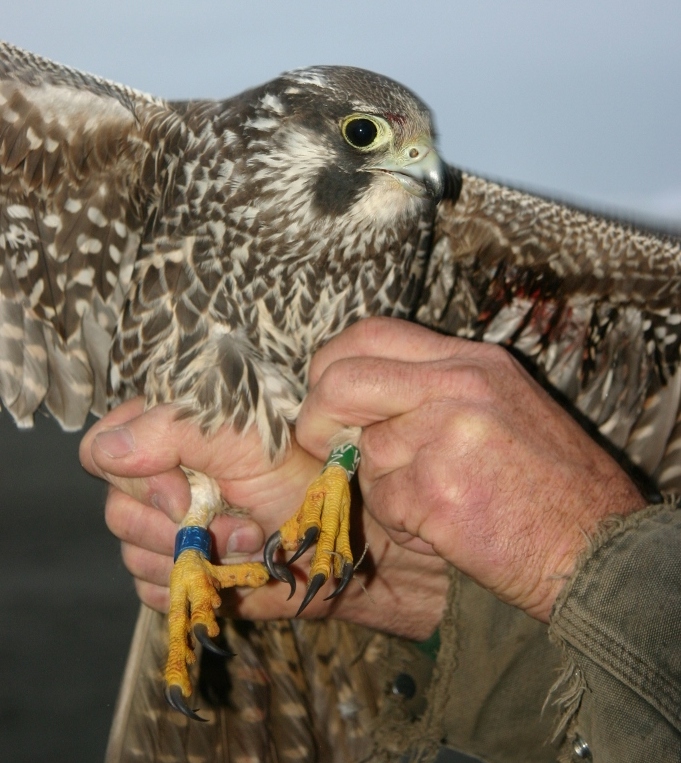
I’m very pleased to share with you here a story about one of our favorite banded Peregrine Falcons, W/Z. Easy-going and approachable, W/Z is, for me, my favorite peregrine in 30 years of raptor surveys and banding.
This story was written by Johnny Palka for his blog, Natures Depth’s. We banded W/Z as a first-year male on the Ocean Shores beach in 2007; he was sighted many times during surveys there over the years. Johnny was inspired to write The Secret Life of W/Z after an encounter with him in 2013 during a family camping trip north of our study area. He reported his sighting the USGS Bird Banding Lab which then shared with me data on his encounter. Soon afterward we began corresponding about W/Z.
Johnny had a long career as Professor of Biology at the University of Washington, specializing in neuroscience. Retiring in 2002, Johnny shared his love of the natural world and his reflections on nature through his blog posts. There were 65 in all, spanning 2015 to 2024.
Passing his 85th year in 2024, Johning stepped away from posting on Nature’s Depths to work on a book, Nature and Beauty, Science and Spirit. I look forward to reading Johnny’s book, which he anticipates having published by March of 2026.

The Secret Life of W/Z, by Johnny Palka
Far from the population centers of the west coast of North America, close to the northwestern tip of the Olympic Peninsula, lies one of the fabled wilderness beaches of the Pacific Coast—Shi-Shi (pronounced shy-shy). Our family started going there in 1971, when our daughters Tanya and Rachel were only four and six years old and their little legs had to work hard to carry them and their tiny blue backpacks, filled with such essentials as teddy bears, along the two miles of old logging road passing through the Makah Indian Reservation and to the top of the steep, sandy cliff that dropped down to the beach. From there, it was another two miles to Willoughby Creek, our source of water for this long, hot Labor Day weekend. But it was worth the effort, because Willoughby Creek empties into the ocean close to the Point of the Arches, with its stunning sea stacks, mysterious caves, and colorful tide pools. We were enchanted!

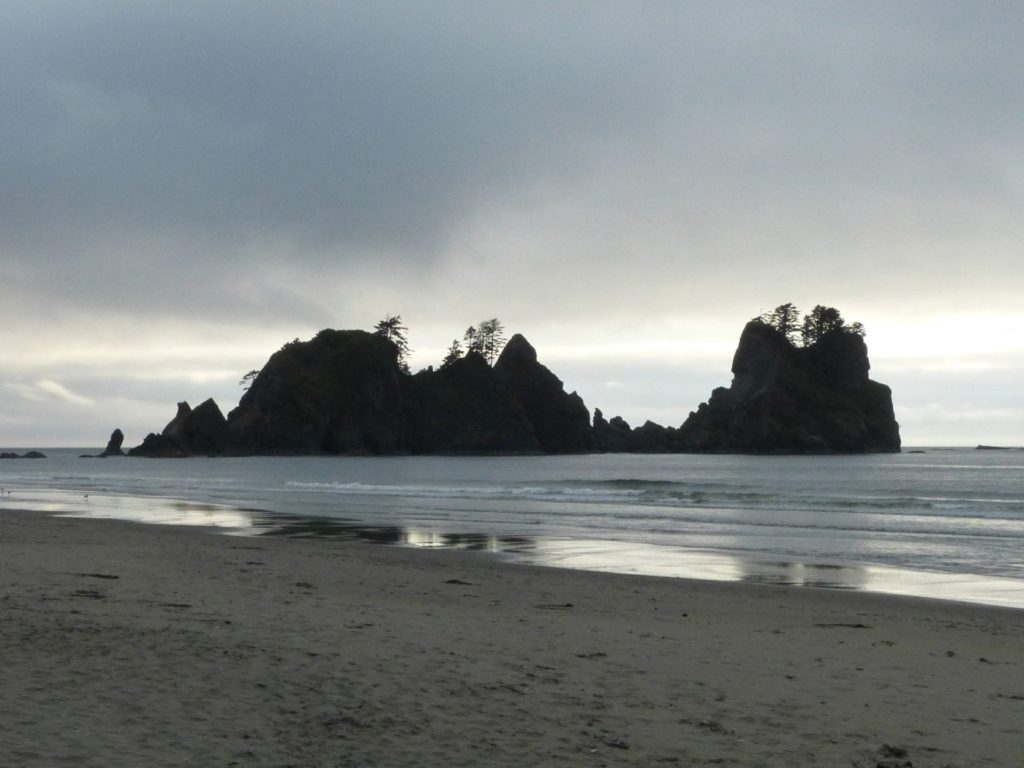
We returned year after year, sometimes as many as three times in a single summer, and brought close family friends with us. Many years later, when Rachel and Tanya were themselves proud parents, we started coming back with a new generation of friends and children. Our last visit was in 2013, when we saw the dramatic sight that occasions this piece.
One day, while enjoying a casual lunch in our sprawling campsite, we suddenly spotted activity close to the water line—a Peregrine Falcon (Falco peregrinus) dismembering a seagull! The Peregrine was quite bold and let me approach close enough to take a series of pictures like these.
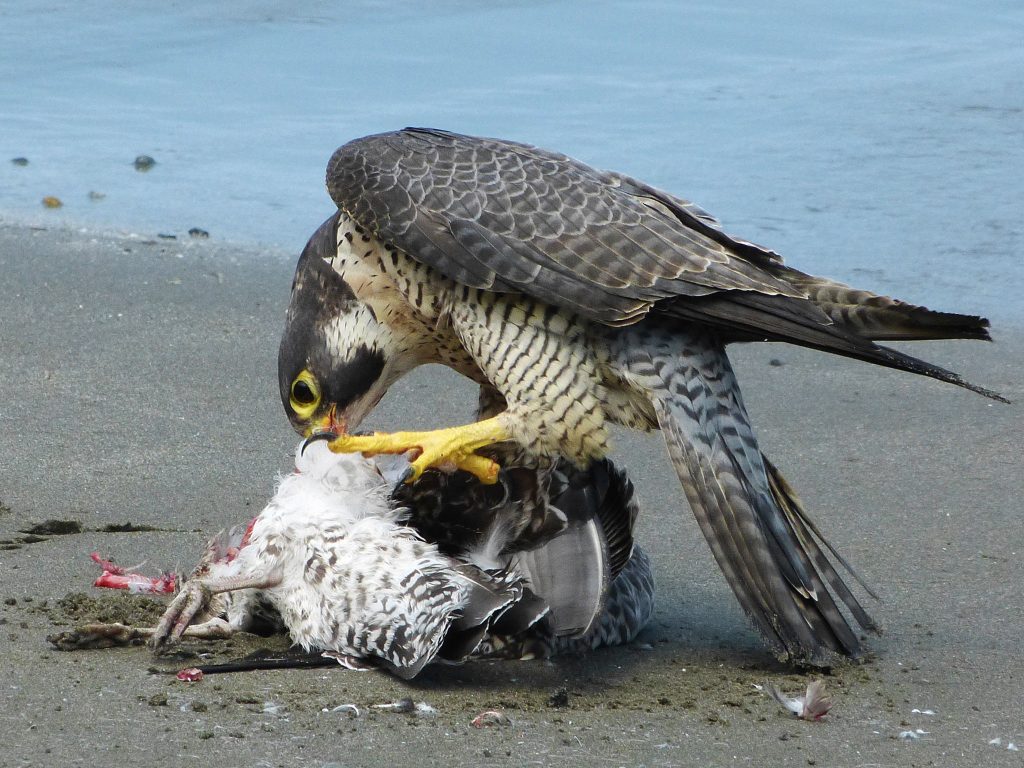
The next morning, while the nighttime mist was still close to the ground, the scene repeated itself. A Peregrine swooped from the sky and downed a seagull. Soon the feathers the falcon plucked off its prey were flying in a stream right into our campsite. For a short while, we saw it feeding a juvenile that was approaching adult size. Unfortunately, before I could get my camera the youngster flew into the trees. The parent, however, was undeterred, continued to feed boldly, and posed for many more pictures.
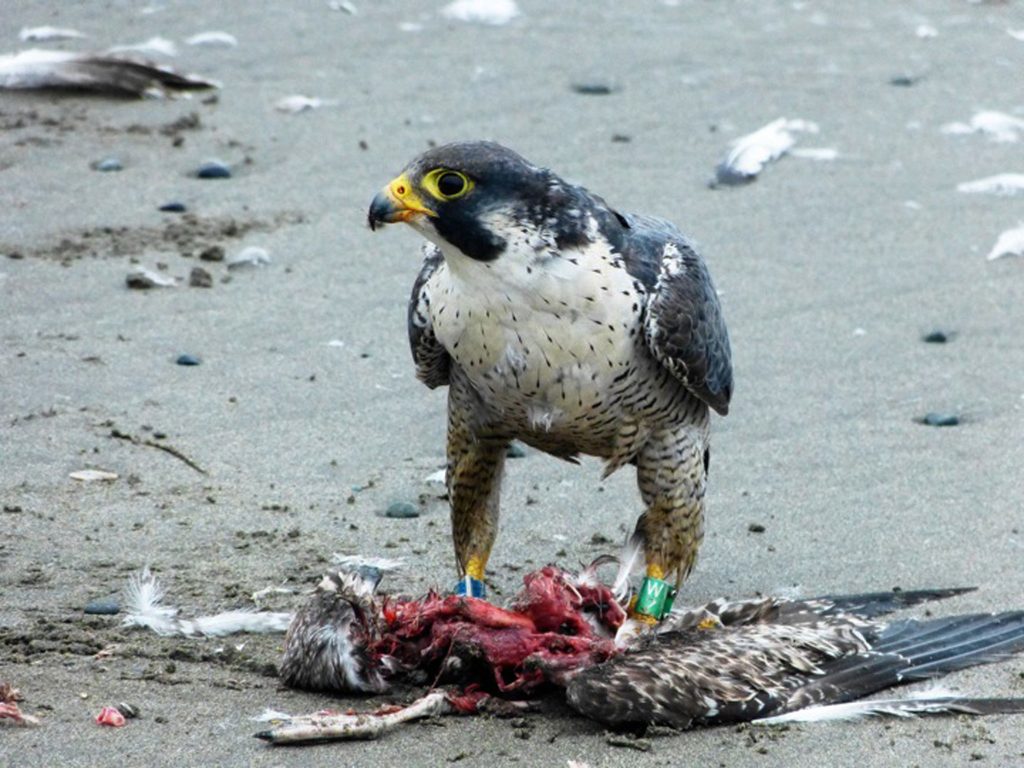
This was a different falcon from the one we had seen and photographed the previous day. Notice the metal tags on its bright yellow leg shanks, one colored green and the other blue. The falcon we had seen the previous day had no tags. A careful look at the green tag reveals that it is marked with the letters W and Z, one above the other. We had encountered a very specific Peregrine Falcon, known to researchers as W/Z.
W/Z is part of a large, ongoing raptor (bird of prey) monitoring effort being conducted on the southwest coast of the Olympic Peninsula of Washington by a dedicated non-profit group called Coastal Raptors, based in Hoquiam. The founder and director of Coastal Raptors is Dan Varland, a biologist with a Ph.D. in animal ecology and decades of experience with raptors. When I sent him photographs of the falcons we had encountered at Shi-Shi, he was immediately able to identify W/Z and tell me his story.
W/Z, a male, was first captured and banded in 2007 at Ocean Shores, about 90 miles as the falcon flies south of Shi-Shi and also on the Washington coast. Between 2007 and 2013, he was sighted and identified twenty-one times, and recaptured three times. This large number of encounters reflects the fact that W/Z is fairly tame and lets people approach him closely enough to read the lettering on his band using binoculars or a spotting scope, or to photograph him as I had done. Photographs of W/Z have even appeared on the covers of magazines, including Audubon Adventures (for children) and American Falconry.
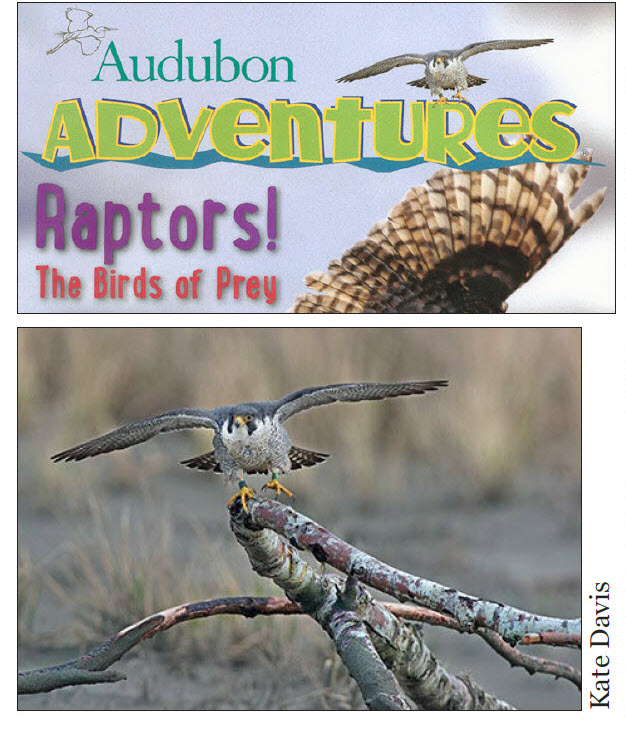
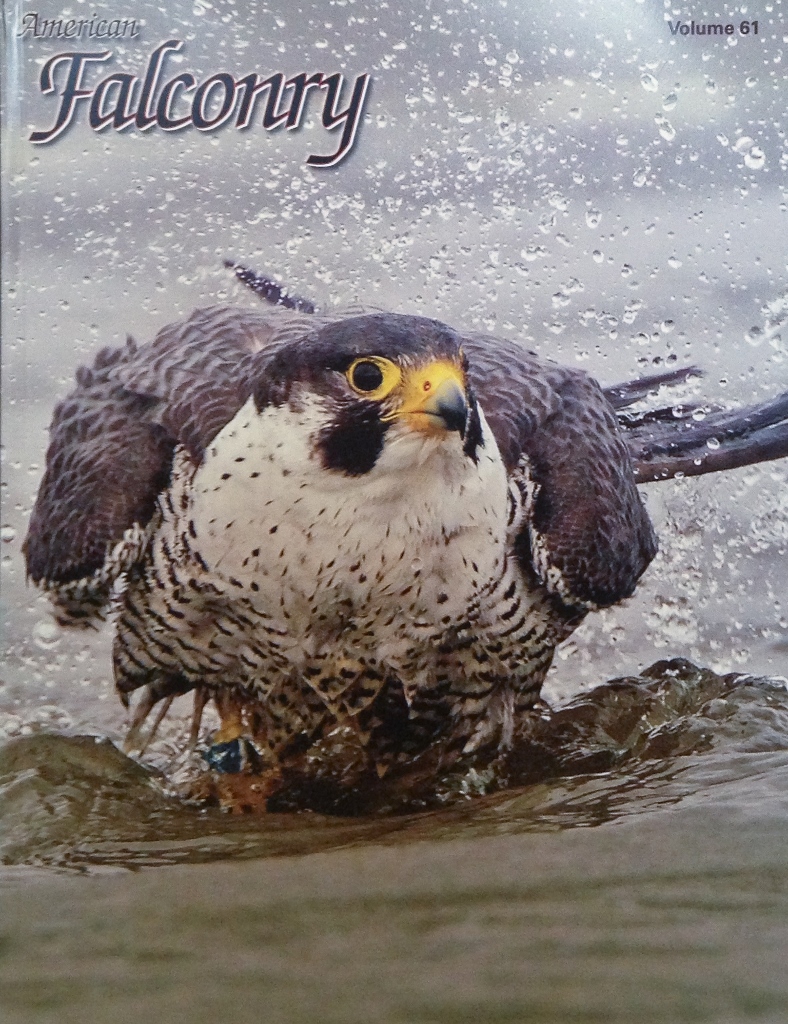
Until our sighting, W/Z had been spotted only in the vicinity of Ocean Shores, where he spends each winter and early spring. We saw him farther away from this home region than anyone else had, and our observation gives an indication of how far afield he goes during the summer. Our having seen him feed a juvenile was also the first report of a likely nesting location. So, our family adventure added some new data to the known natural history of a specific bird, an individual who has been tracked for nearly a decade.
Bird banding is a highly regulated and organized activity. The North American Bird Banding Program is a joint effort of the United States and Canadian governments, conducted by the US Geological Survey and the Canadian Wildlife Service. Bird banders are trained and licensed, and regularly report their observations to a central office.
Except perhaps for signature trees, we are used to observing the creatures around us generically, as members of a species or other group. Bird banding is one of the approaches to the study of life that remind us that living creatures are also individuals, with individual lives, fortunes, and misfortunes.
When you remember that each living being is an individual at the same time that it is a member of a species, a population, and an ecosystem, does this affect your perspective on the natural world?

Note: If you would like to see more of my Blog posts on Peregrine Falcons, click on “Pacific Coast Peregrines” below.
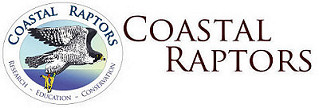
2 responses to “The Secret Life of W/Z”
What a wonderful story! I have been a lover of raptors & especially peregrine falcons since I first saw a pair nesting on Morro Rock when I was a teen (I’m 76). I live in Gold Beach oregon now, & have had the privilege of observing several peregrine feasting on gulls on the beach there.
Thank you, Michael! I’ve been to both Gold Beach and Morro Rock. Beautiful locations!